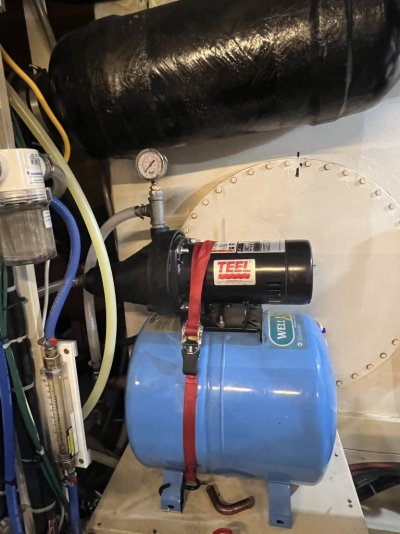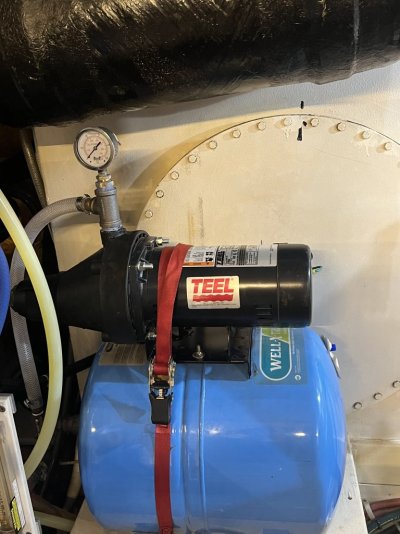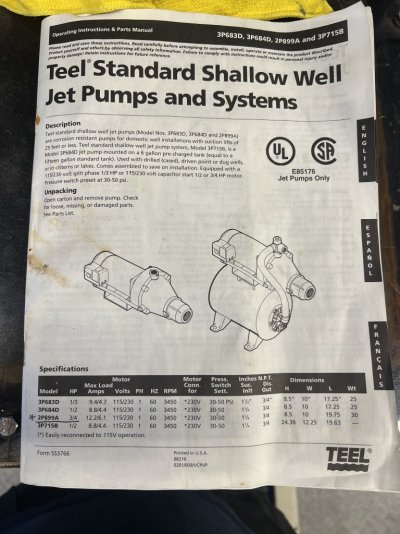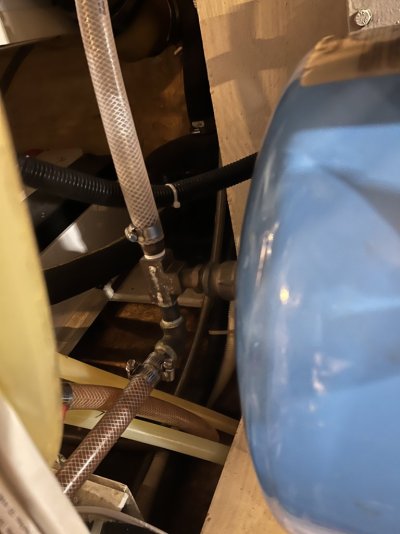Mac2
Guru
Spent the last two days attempting to get a new 3/4 hp Teel jet pump to prime-going nuts! I had removed a Myers 1/3 hp house pump because it was slowly loosing pressure-it was functioning. The boat had a spare (brand new) Teel pump I installed ((115 vac). I primed, turned on and it would get up to 25 psi and then sit there and then drop to just below 20 psi. I took apart and confirmed pump was filled with water. Pump would spin and get extremely hot, but never get past 25 psi. My 12 vdc pump (backup system)!works fine-they share the same plumbing. Any ideas?




